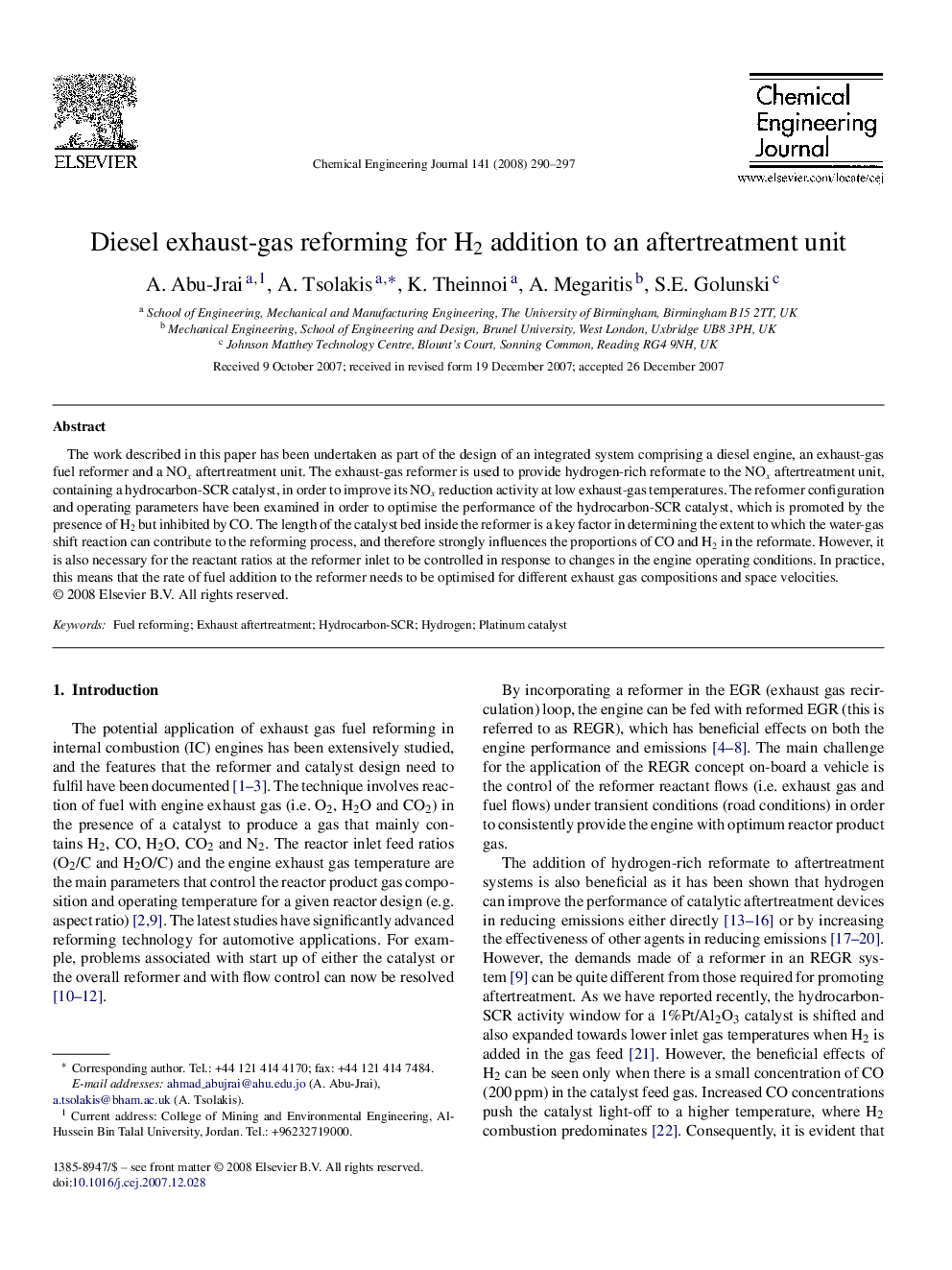| Article ID | Journal | Published Year | Pages | File Type |
|---|---|---|---|---|
| 153063 | Chemical Engineering Journal | 2008 | 8 Pages |
The work described in this paper has been undertaken as part of the design of an integrated system comprising a diesel engine, an exhaust-gas fuel reformer and a NOx aftertreatment unit. The exhaust-gas reformer is used to provide hydrogen-rich reformate to the NOx aftertreatment unit, containing a hydrocarbon-SCR catalyst, in order to improve its NOx reduction activity at low exhaust-gas temperatures. The reformer configuration and operating parameters have been examined in order to optimise the performance of the hydrocarbon-SCR catalyst, which is promoted by the presence of H2 but inhibited by CO. The length of the catalyst bed inside the reformer is a key factor in determining the extent to which the water-gas shift reaction can contribute to the reforming process, and therefore strongly influences the proportions of CO and H2 in the reformate. However, it is also necessary for the reactant ratios at the reformer inlet to be controlled in response to changes in the engine operating conditions. In practice, this means that the rate of fuel addition to the reformer needs to be optimised for different exhaust gas compositions and space velocities.
